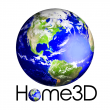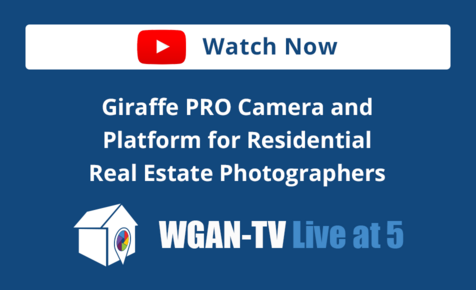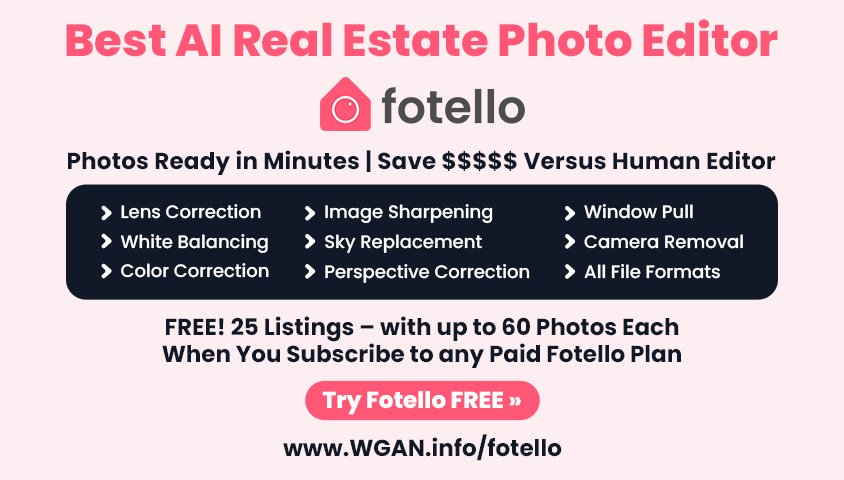How to Shoot Matterport for Virtual Staging with CAPTUR3D14868
Pages:
1
 WGAN WGANStandard Member Los Angeles |
Home3D private msg quote post Address this user | |
We've now begun offering a new service here in Los Angeles. When a RE agent has a listing that is empty, vacant, no furnishings, we'll deliver fully staged photos for the MLS and also a fully staged Matterport space of the property. And we'll do it in one step. Here's our planning map from yesterday's shoot. We're a full-service media provider, creating traditional HiRes HDR photos, video, drone, whatever a client needs. I've never before delivered "still photos" extracted from Matterport spaces because the quality is below traditional HDR shot on a high-end DSLR like Canon, Sony, Nikon. However, that has now changed, because even the lower-quality stills from MP are acceptable and thanks to Captur3d, virtual staging has taken a great leap forward. Yes, you can have traditional stills virtually staged, but the process costs money. Each still image (360° panos can be staged too) has to manually be 'retouched' by layering on the images of furniture, plants, etc. It's labor intensive, even if the labor is outsourced. And if you have multiple views of the living room, each image must be separately retouched. Captur3d has changed all this. They employ AR (augmented reality) to add furnishings as a 3D layer over your Matterport space. Actually, I shouldn't use the word "over" like a Photoshop layer is OVER other layers, because in the 3D world, an OVER-lay can be hidden behind the 3D objects of the BASE layer. Let me explain. Say you have an apartment with an empty living room. You add a 3D AR piano into the room. In Captur3d, this 3D object is really there. The piano is visible in walkthrough mode, and even in dollhouse view. But say you move to the dining room from which only half the piano can be seen. Well, half the piano is hidden behind the 3D doorway of the BASE 3D model, the Matterport space. So in 3D AR, an overlay layer is not always in front like in Photoshop. What's really cool is that once you drop that piano into the room, it's immediately visible from every MP nodal position that can see any portion of it. One action, adding the piano, has "retouched" ALL the panos that are in range to see it. This means that you've essentially "retouched" all of these panos for use as "staged still photos for the MLS" as well as for the Matterport walkthrough tour. Okay, the above is all the intro. Here's the message. When you plan to shoot a MP space for virtual staging, the first thing to do when entering each room is to stop, think, decide where all the furnishings will go. Sketch it out in your mind, or maybe even on paper. Think spatially, and place your nodal positions where you will want to have them for comfortable navigation between and around the furniture which is NOT YET THERE. Worst case scenario? You create a scan and later decide to put a 6 foot tall armoire on that spot. After staging, moving to that spot puts you INSIDE the armoire. This is real-virtual 3D, folks, if that's not non-sensical! We just shot a condo and here's the MP mini-map of the space, with sketched in reminders of where the virtual furniture and plants will go. you'll see we carefully placed the scan positions so they'll make sense in two ways. (1) Visitors can logically move around and between the furnishings, and (2) we can scans positioned from which to export good still photos of the rooms, which include near-to-corner views just like you'd do if shooting traditional photos of a home. I hope these thoughts are helpful. |
||
| Post 1 • IP flag post | ||
|
Belfast, United Kingdom |
3dshowcaseuk private msg quote post Address this user | |
| I saw the video Capture 3D launched today on this feature Do you have any examples of staged matterport models you can share? Thanks |
||
| Post 2 • IP flag post | ||
|
Belfast, United Kingdom |
3dshowcaseuk private msg quote post Address this user | |
| My question is cab the virtually staged matterport tours be viewed online in the same way as a matterport tour | ||
| Post 3 • IP flag post | ||
 WGAN WGANStandard Member Los Angeles |
Home3D private msg quote post Address this user | |
| Here is this space, finished with staging. This system is working well. Many improvements are ahead, but it's functioning now and is amazing. Completely do-it-yourself. If a client calls up and says they want one plant changed, you can tweak in two minutes, tap Publish and it's immediately live. And the URL stays the same. Amazing! I did see this space crash on my older iPhone 8, but desktop and all my other iOS devices worked fine. Maybe it was a weaker processor issue. I am a cheerleader for this new service. Jump on this bandwagon before your competitors do. |
||
| Post 4 • IP flag post | ||
 WGAN WGANStandard Member Los Angeles |
Home3D private msg quote post Address this user | |
| Here is another with 75% virtual staging, 25% real. And here is one the opposite - 25% virtual and 75% real. Try to tell the difference. |
||
| Post 5 • IP flag post | ||
Pages:
1This topic is archived. Start new topic?

















